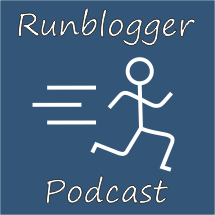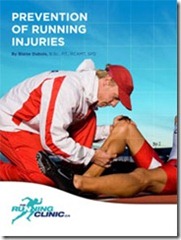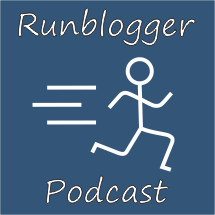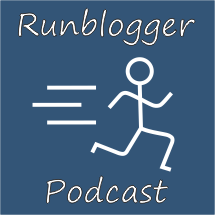 Episode #16 of the Runblogger Podcast covers some of my concerns about the recent barefoot and minimalist (e.g., Vibram Fivefingers) vs. typically shod running debate, and provide a word of caution about jumping into barefoot/minimalist running too quickly. Ultimately, the point I’m trying to make here is that the fact that we all are running is more important than what we do, or do not, put on our feet.
Episode #16 of the Runblogger Podcast covers some of my concerns about the recent barefoot and minimalist (e.g., Vibram Fivefingers) vs. typically shod running debate, and provide a word of caution about jumping into barefoot/minimalist running too quickly. Ultimately, the point I’m trying to make here is that the fact that we all are running is more important than what we do, or do not, put on our feet.
To listen or subscribe via RSS: http://feeds.feedburner.com/RunbloggerRuncast
To listen or subscribe via Itunes: http://itunes.apple.com/WebObjects/MZStore.woa/wa/viewPodcast?i=80594539&id=348528478
Alternatively, you can listen directly here:
Links related to Runblogger Podcast #16:
-Here’s a link to the first post in an awesome series on barefoot vs. shod running from the Science of Sport blog.
-At the beginning of this podcast I reference the Book Born to Run, by Christopher McDougall. You can read my review of Born to Run here.
-If you’re interested in the Nature article on barefoot vs. shod running by Daniel Lieberman and colleagues, you can find it here: http://www.nature.com/nature/journal/v463/n7280/full/nature08723.html
-Here is a nice write-up on the research of Daniel Lieberman’s study from the Boston Globe: http://www.boston.com/news/health/blog/2010/01/oliver_ames_cro.html
-And finally, here is a really nice companion site to the Nature article from Daniel Lieberman’s group at Harvard University: http://barefootrunning.fas.harvard.edu/index.html
-Runblogger Runcast #7 – The Evolution of Distance Running in Humans – Click on the link to view the show notes for my podcast episode on the evolution of distance running in humans.
-Posts on Minimalist Running – Click on the link to view all of my blog posts on minimalist running.
-Posts on Vibram Fivefingers – Click on the link to view all of my blog posts on the Vibram Fivefingers shoes.
-Fleet Foxes – The closing song, “White Winter Hymnal,” can be downloaded from Iron and Wine’s web page at Sub Pop Records.



















Can’t wait to listen to this. Caution is absolutely the best council. Speaking from experience I tweaked my calf doing too much too soon. Really looking forward to listening on my next run.
Let me know what you think!
Pete
As promised I listened to this while on my run. There was much head nodding which might have prompted some odd looks from folks.
TMTS is risky. And you’re *bang* on the money counciling caution. The body is amazingly resiliant when treated properly and a transition to BF/minR should be a slow one. There are no studies yet as you discussed showing that one route will reduce injury. Thank you for bringing this discussion to the table. I think you’re right on the money.
Ted – thanks, I don’t think we can urge caution enough when it comes to
making the transition to barefoot or Vibram running.
Pete
Great podcast as always. I’m intrigued with barefoot running because of the foot strengthening potential. Right now I’m between buying the Vibrams or Nike Free 5.0 and try a short run with minimalist gear. Any suggestion on which one could be a better choice?
Tough choice – can I say both? I love both the Free 3.0’s and the Vibrams,
and one appraoch would be to start with the Frees as a way of working your
way down to the Vibrams (that’s what I did). The only issue with this is
that the Free’s are still heavily cushioned and have a fairly typical heel,
neither of which are the case with the Vibrams. If you really want the
strengthening benefit, the Vibrams are the way to go – they’ll work your
soleus muscle (lower half of the calf) and feet very well, but you need to
be careful as I repeatedly say in the podcast. Resist the urge to go far
right off the bat – it’s hard since running in Vibrams is so much fun!
Pete
Good podcast. I agree with all of your conclusions, except that about where the science stands.
The paper you mention showing that shoes deform our feet is here: link to webh01.ua.ac.be…
That study cites a number of other studies that go back over 100 years.
If we know that shoes deform our feet, then clearly wearing shoes is injurious. Running in shoes is also therefore injurious, since running is simply a subset of the activities that cause deformation when performed in shoes. This is in line with Lieberman’s findings, which show that runners who grow up running in shoes have deformed strides, compared to the strides of habitually barefoot runners (the natural condition). So it’s clear that running in shoes is injurious, if we take it as proven that wearing shoes is injurious.
Whether or not running in shoes causes the common running-related injuries compared to barefoot running is another question entirely. So in this I agree with you.
And I’ll also point out that I have run about 1 mile barefoot to date. :)
Running in New England in the winter barefoot is a recipe for disaster. I’ve therefore put a lot of effort into finding shoes that are designed to allow for “natural” movement of the foot.
The US Army did a big study on this, published in 1915, that found that people with feet injured by shoes can restore their feet to a more-natural condition by wearing well-designed footwear.
It seems pretty obvious to me that running as nature intended is superior, and Lieberman’s research and the marathon results for the last 20 years, dominated by people who grew up running barefoot, seems to confirm this.
I’ll also note that running-related injuries are, according to the Army, now the number one cause of injury in basic training at at least two Army bases. In 1915, running-related injuries were not mentioned as a problem in the Army’s study of the injuries caused by shoes. Clearly something has changed…
As mentioned in another comment, I’d also like to do more barefoot running as the weather allows, as it seems to have some clear benefits. Everyone I’ve corresponded with says that barefoot running promotes a more efficient form than even Vibrams, and as we know, efficiency in running form is the most important criteria for speed in racing.
Tuck,
I actually referenced that study as a result of reading your comment on the
Science of Sport blog – thanks for pointing it out!
I guess it comes down to how you define “injury.” I’m referring specifically
to whether or not running in shoes or running barefoot is more likely to
cause injury – mostly from the standpoint of providing advice to someone who
is hearing all of the media reports that are out there on
barefoot/minimalist running. I agree completely with your statement that
shoes cause deformity if the “natural” state for our species is to be
barefoot, but the same argument could be made for any aspect of modern
society that causes a physical or physiological change in the body. Would
you consider a tennis player to be “injured” because swinging a racket over
and over again leads to thickening of the bones in one arm and not the
other? This is clearly not something our ancestors were likely doing, and
therefore it is a form of “deformity,” but I’d hesitate to call it injury.
Wolff’s law states that our bones adapt to the forces that are regularly
placed upon them, and thus I view these deformities more as an expression of
anatomical plasticity rather than injury. In that sense, the deformity of
our feet in shoes may actually be serving to prevent injuries that could
happen while wearing them. It’s a manifestation of the fact that our body
has a remarkable ability to adapt to the conditions you expose it to, and by
going minimalist we are simply allowing it to adapt (slowly) back to a more
natural state. Does this make sense?
Pete
I’m glad that study is getting attention. I felt, reading the “Science of Sport” guys posts, that part of the reason they think the science isn’t there is because they’ve not looked at all the science that is there. That’s not to say the case is bullet-proof, but it’s a lot stronger than “no evidence”.
I think the first day one of our ancestors tied a rock to a stick he was well on his way to inventing the game of tennis. Or threw a spear…
Clearly some degree of adaptation to shoes is fine, the Eskimo prove that having shoes can be a useful adaptation to a given environment.
But there are lots of changes in shod feet that pass over the line from adaptation to injury. Ingrown toenails, blackened toenails, bunions, big-toes bent inward, high arches. They’re all caused by shoes, and none of them are going to make you a better runner. Importantly, they all seem to be reversible when you go barefoot, or get in a better-fitting shoe.
Would like to ask….are there any good vibrams for winter running?
I used my KSO’s with Injinji socks all winter here in NH – worked perfectly
down to 10 degrees Fahrenheit.
Pete